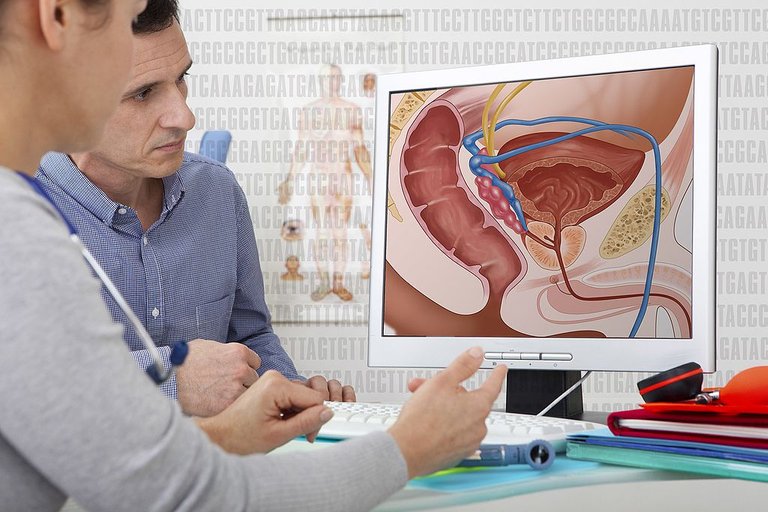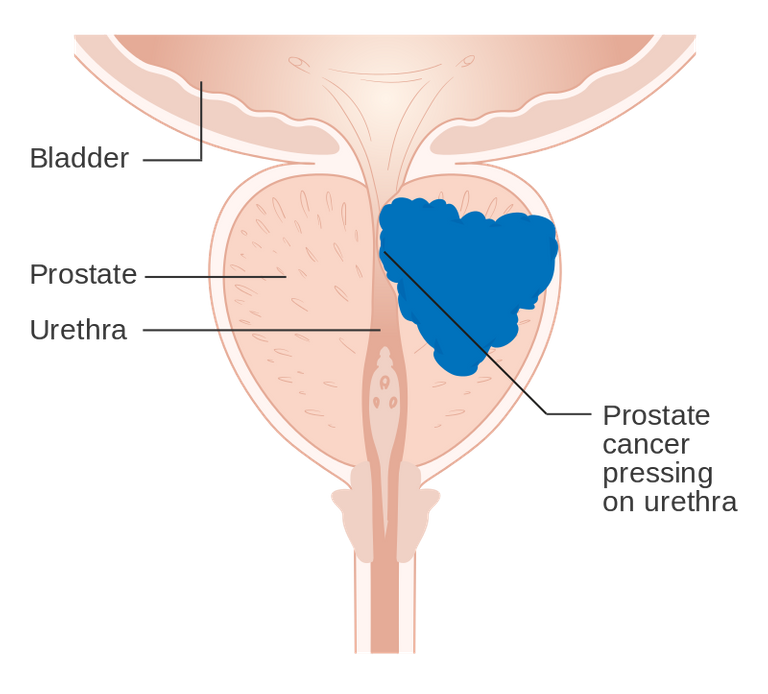Micheal, a young man in his late twenties, came back from a long trip, exhausted and complaining of backache, so, he decided to take some analgesics to relieve the pain as he concluded that he was just stressed from the journey. A few days down the line, the pain had worsened, and he noticed that he urinated frequently and had bloodstains in his urine. In no time, Mike was unable to walk. It was obvious then that he was not just stressed from his journey. He was rushed to the hospital but was misdiagnosed to have prostatitis which is an infection in the prostate.
A treatment regime for the infection followed, but it was largely ineffective. More tests and investigation revealed that he, in fact, Michael had cancer of the prostate. It was a piece of shocking news but the family still summoned strength and arrangements were made to transfer him to the best hospital that could handle his case. Unfortunately, Mike did not make it to the hospital as he died on the way. Mike lost his life because he was misdiagnosed and also because he did not know what to look out for as a male with risks of the deadly misnormal - prostate cancer.

Cancer is a disease that results from changes in the cell that cause the growth and multiplication of these cells in any part of the body. In other words, the mutation of normal dividing cells causes them to resistant to regulations and this leads them into dividing uncontrollably. Some kinds of cancers are visible because they cause growth called tumors while others such as leukemia or cancer of the blood, are not.
prostate cancer at a glance
Prostate cancer, also referred to as prostatic carcinoma is cancer found in a man's prostate. The prostate is a small walnut-sized gland that produces seminal fluid and is responsible for nourishing and transporting it. Almost all cancers of the prostate are acinar adenocarcinomas; meaning they develop in the gland cells that produce prostate fluid. Other types of prostate cancers are ductal adenocarcinomas (they start in cells of the tube of the prostate gland) which are known for their rapid spread, transitional cell carcinomas that start in the urethra, squamous cell cancer, and small cell prostate cancer. These other types of cancers are rare. Some prostate cancers grow and spread very rapidly as in the case of Mike, while others grow slowly.
Symptoms of Prostate Cancer
Sadly, this deadly disease that is the second most common cause of death in American men has no symptoms that are unique to it, but here are a few things to look out for:
- Pain in the bones
- Frequent urination
- Pain when urinating
- Blood in urine
- Urge to urinate and leaking of urine
- Erectile dysfunction
Treatment of Prostate cancer
Cancer is deadly, but unlike in the past, there are many treatment options for it. Some cancers grow slowly and less aggressively than others, and for this reason, doctors leverage the level of cancer for the treatment. The treatment for cancer depends on the stage of cancer, so we might as well glance quickly at the stages of prostate cancer. Some pieces of information are needed to determine the stage of prostate cancer and they are:
- The extent of the main tumor
- Whether cancer has spread to the lymph nodes(N) and other organs very close to the prostate
- The extent to which cancer has spread to other tissues of the body if any.
- The PSA (prostate-specific antigen) level at the time of diagnosis
- The grade group is a measure of how likely cancer will grow and spread.
Based on this information, the stage of cancer can then be determined.
At Stage I: the tumors may not be felt through a digital examination of the rectum, but can be seen during a transrectal ultrasound and has a PSA level that is above 10 but less than 20.
At stage II: the tumor may be felt through a digital examination of the rectum. or seen through imaging, but is still in the prostate gland which means it has not spread to nearby lymph nodes or anywhere else in the body. This stage has a PSA level of less than 20.
At stage III: At this stage, cancer had grown outside the prostate to nearby tissues like the seminal vesicles or other tissues around the pelvic region. The PSA level could be any value and the grade group may vary from 1 to 5.
At stage IV: cancer had already spread beyond the pelvic region to other parts and organs of the body. The grade group and PSA levels could be any value.
Treatment Options For Prostate Cancer, therefore, include the following:
Radiotherapy: this is the use of very high amounts of radiation to kill cancerous cells. X-ray uses radiation too but in a little amount. The common downside to radiation therapy is hair loss, others are nausea and vomiting, skin changes, blurry vision, and headache.
Surgery: it is possible to remove the tumor if it has not grown outside the prostate
Chemotherapy: Drugs are used to inhibit the supply of the male androgen hormones that serve as fuel for the prostate cancer tumor.
Immunotherapy treatments help to boost the immune system to fight cancer

Targeted therapy uses drugs to target specific proteins and enzymes responsible for the growth and survival of cancer cells.
Hormone therapy and stem cell transplant are other forms of treatment for prostate cancer. Some cancers are chronic and cannot be cured. In such cases, medication and treatment are used to control the disease and prolong life by some months or years. Scientists however are still exploring new methods and medications that can be used to target and kill cancerous tumors and there is a wide array of possibilities. In May 2020, the FDA approved two new drugs that can be used to treat advanced cases of prostate cancer.
Is Prostate cancer avoidable?
There is no proven strategy to avoid cancer, although there are tips that can help one reduce the risk of having this disease and they include:
- Eating a healthy low-fat diet, that includes fruits (Foods high in lycopene, like tomatoes, guava, and watermelon, may reduce risks of prostate cancer) and vegetables
- Frequent exercise
- Maintaining a healthy (frequent) sex life.
Thanks for your contribution to the STEMsocial community. Feel free to join us on discord to get to know the rest of us!
Please consider supporting our funding proposal, approving our witness (@stem.witness) or delegating to the @stemsocial account (for some ROI).
Please consider using the STEMsocial app app and including @stemsocial as a beneficiary to get a stronger support.